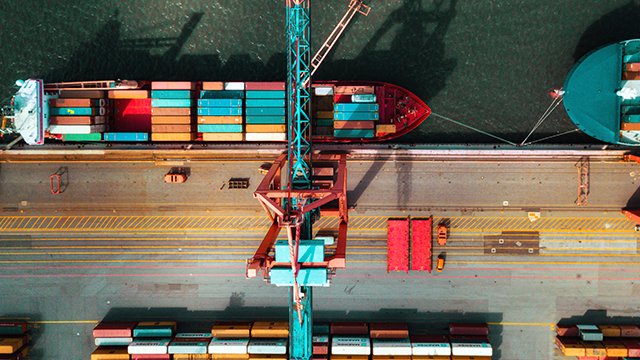At the beginning of 2024, we foreseen That the three most influential challenges and opportunities this year would be:
- Dilemmas of realignment of strategic supplies (including narration, stroke and relocation);
- Prices, sanctions, prohibitions and other restrictions; And
- Genai
The strategic supply was indeed a major theme this year, but with a change in geography that saw Mexico become the largest exporter in the United States, which is important in the mixture of new Mexican manufacturing facilities targeting the American market were Chinese companies that moved from their original basis through the Pacific Ocean. This trend is likely to accelerate as Chinese products are increasingly put in the hair of American prices.
At the same time, there is no end in sight for international restrictions on trade and business. The growth in sanctions has followed a graph of “hockey stick” since the start of the Russian war in Ukraine. According to Moody data, around 18,000 entities sanctioned and people were added to the global surveillance lists in 2023 only, while the number of entities sanctioned by extension due to ownership and control totaled 24,000 in December 2023. And the prices will be increasingly highly companies to reconsider supply strategies. Given the growing dependence of governments on the restrictions of the supply chain for political, economic and commercial purposes, we expect this risk to continue among the three main trends in 2025.
Genai, our third prediction of 2024, continued to become an important tool for supply chains by helping data consistency and risk monitoring, including for Our own efforts in Moody’sAnd its ascent should continue. The integration of digital transformation efforts with Genai Technologies further improves the impact of Genai, offering more sophisticated tools for predictive analysis, automation and decision -making. This synergy is essential to develop resilient and reactive supply chains which can anticipate and mitigate risks proactively.
We believe that the three most important areas of supply chain risk in 2025 will be:
- Restrictions on the supply chain. Just like this year, the restrictions will continue to play an important role, exerting upward pressure on costs. The most recent examples are European prices on Chinese cars and the United States are planning to prevent Chinese software and equipment from entering cars in America.
- Risk of reputation in the supply chain. The risk of reputation will probably be the highest in recent memory. This is the result of the polarization of public opinion, combined with omnipresent social media. Doing business with a supplier that many of your customers consider negatively will be difficult to navigate. In addition, legislation such as the Di -Diligence Act due to the German supply chain, marking its second anniversary in January 2025, illustrates a global trend in the transparency of companies and laws on reasonable diligence relating to modern slavery, forced work, the trafficking in human beings and environmental damage. This will continue to refine the emphasis on the reasonable diligence of suppliers and to make reputation and financial risks for companies with defective processes.
- Risk value. The leaders of the supply chain have long pushed a way to quantitatively measure the impact of the various problems and crises on the performance of the company. This has been a long -standing gap, but data availability, new technologies (including the GENAI) and the progress of supplier risk assessments will facilitate easier problems before fully materializing. Risk value Calculations can help organizations determine whether their risk mitigation strategies represent a value for money compared to potential income loss in the event of the supply chain disruption.
While you are thinking about how these developments could affect your business, at Moody’s, we work to help you answer key questions:
- We offer a base to follow and react to the restrictions of the supply chain.
- Our AI capacities can monitor the risk of reputation for your supply chain. We can help you define your risk tolerance and areas of greater concern.
- We can help customers answer the question that arises for each problem of significant supply chain: what is the impact?
To discuss these risks of current or other supply chain, go to https://www.moodys.com/web/en/us/supplier–tisk.html
